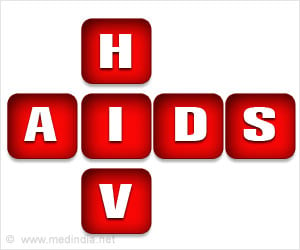The HIV epidemic has been in decline over the past decade but there are still 36.7 million people worldwide living with HIV, most of them in sub-Saharan Africa.

‘Globally, people who inject drugs and men who have sex with men are 24 times more likely to be infected with HIV than the general population, while sex workers are 10 times more likely.’





"If we don't, the epidemic could once again take hold with huge human and financial losses," he warned. The HIV epidemic has been in decline over the past decade, but there are still 36.7 million people worldwide living with HIV/AIDS, most of them in sub-Saharan Africa. Great strides have especially been made globally towards preventing children from contracting HIV, with new infections among those under the age of 15 down 56 percent since 2010 and by 70 percent since 2000 to around 150,000 last year, the report showed.
- Surging infections in Russia -
But at the same time, some 1.9 million adults have contracted HIV globally every year for at least the past five years, according to Tuesday's "Prevention Gap" report. Most regions saw a flat trend, with relatively small increases or declines, but the Eastern European-Central Asian region had shown a dramatic 57-percent increase in new annual infections among adults since 2010, the report said.
A full 80 percent of those new infections occurred in Russia, with another 10 percent found in Ukraine, it said, blaming low coverage of prevention programmes, in particular harm-reduction interventions among people who inject drugs. Experts have complained that the Russian government's policy focuses on treatment while neglecting prevention drives such as sex education in schools.
Advertisement
If the epidemic is not controlled among the main risk groups it will become more generalised, he warned. Globally, people who inject drugs and men who have sex with men are 24 times more likely to be infected with HIV than the general population, while sex workers are 10 times more likely, the report said.
Advertisement
- Girls, women at risk -
UNAIDS also voiced deep concern over the situation in eastern and sub-Saharan Africa, which continues to account for the vast majority of cases. While the region has seen new infections among adults fall four percent since 2010, Tuesday's report pointed to a stark gender inequality among those contracting the disease.
Three quarters of all new HIV infections among people aged 15-24 in the region occurred among adolescent girls and young women, the report found. This was partly due to "extremely high levels of sexual abuse and violence against female children, including underage, child and forced marriage," it said, also stressing that girls and women often lack access to HIV services due to gender inequality and stigma.
Such difficulties in the fight against the HIV/AIDS epidemic are being compounded by dwindling funding by international donors, and generally not enough spending on prevention efforts. "We have a five-year window of opportunity. If we miss this window of five years, we will have a rebound in this epidemic, we will have resistance, and will not be able to control the epidemic and make sure we end it by 2030," Sidibe warned.
Source-AFP














